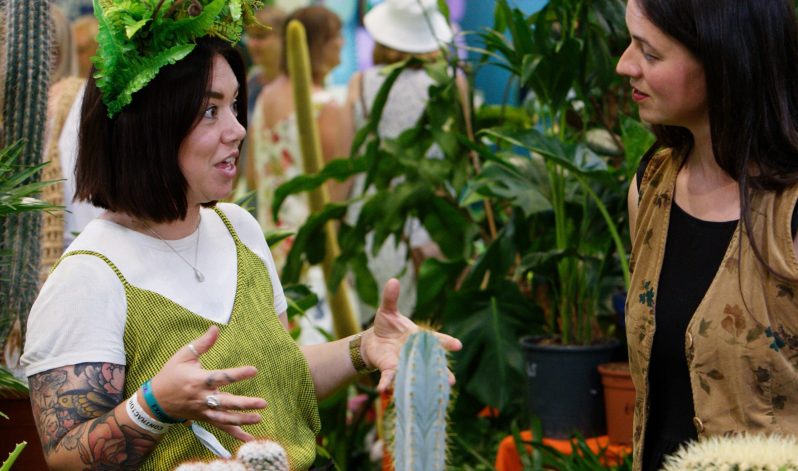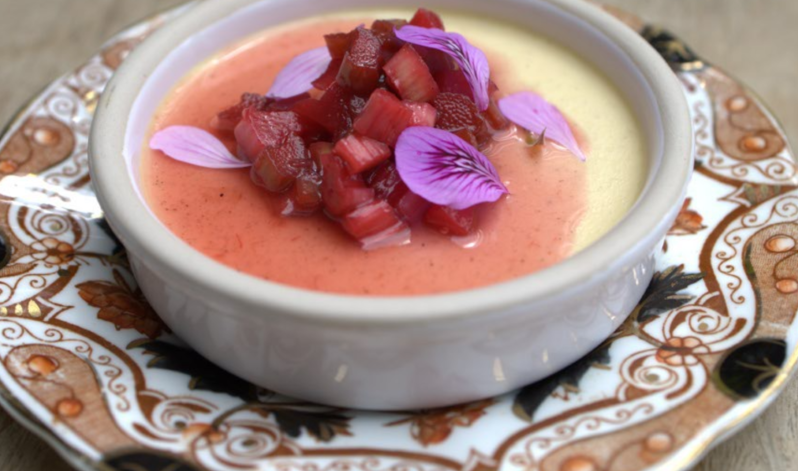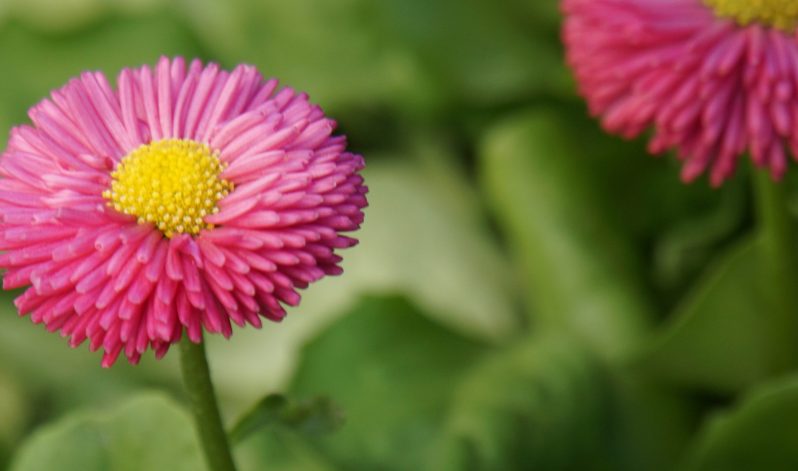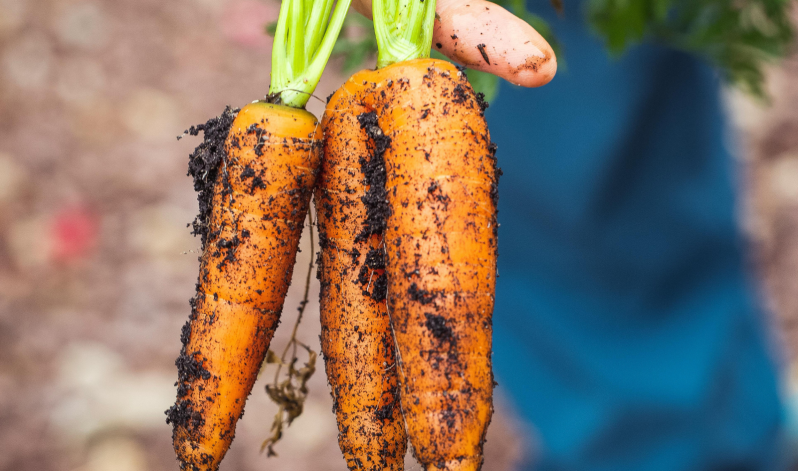Apr 17, 2024
0 comment
See who's on when and where at the Spring Fair this May!
It’s not long now until we return to Beaulieu for the Spring Fair – what better way to prepare for your visit than discovering who’s on the stages and when! Below you’ll find the timetables for all of our expert talks, so you won’t miss your favourite gardening experts on stage.Sessions marked with (S) will be signed by a British Sign Language professional on Friday 3 May.
/*! elementor - v3.19.0 - 07-02-2024 */
.elementor-widget-image-carousel .swiper,.elementor-widget-image-carousel .swiper-container{position:static}.elementor-widget-image-carousel .swiper-container .swiper-slide figure,.elementor-widget-image-carousel .swiper .swiper-slide figure{line-height:inherit}.elementor-widget-image-carousel .swiper-slide{text-align:center}.elementor-image-carousel-wrapper:not(.swiper-container-initialized):not(.swiper-initialized) .swiper-slide{max-width:calc(100% / var(--e-image-carousel-slides-to-show, 3))}
BBC Gardeners’ World Magazine Stage Hosted by Gardeners’ World Magazine Editors & David Hurrion, find out ‘what to do now’ in your spring garden.Enjoy daily talks from the editors, plus special guests, to get practical tips, topical advice, and the ultimate growing guide to get the best out of your garden this season.
/*! elementor - v3.19.0 - 07-02-2024 */
.elementor-accordion{text-align:left}.elementor-accordion .elementor-accordion-item{border:1px solid #d5d8dc}.elementor-accordion .elementor-accordion-item+.elementor-accordion-item{border-top:none}.elementor-accordion .elementor-tab-title{margin:0;padding:15px 20px;font-weight:700;line-height:1;cursor:pointer;outline:none}.elementor-accordion .elementor-tab-title .elementor-accordion-icon{display:inline-block;width:1.5em}.elementor-accordion .elementor-tab-title .elementor-accordion-icon svg{width:1em;height:1em}.elementor-accordion .elementor-tab-title .elementor-accordion-icon.elementor-accordion-icon-right{float:right;text-align:right}.elementor-accordion .elementor-tab-title .elementor-accordion-icon.elementor-accordion-icon-left{float:left;text-align:left}.elementor-accordion .elementor-tab-title .elementor-accordion-icon .elementor-accordion-icon-closed{display:block}.elementor-accordion .elementor-tab-title .elementor-accordion-icon .elementor-accordion-icon-opened,.elementor-accordion .elementor-tab-title.elementor-active .elementor-accordion-icon-closed{display:none}.elementor-accordion .elementor-tab-title.elementor-active .elementor-accordion-icon-opened{display:block}.elementor-accordion .elementor-tab-content{display:none;padding:15px 20px;border-top:1px solid #d5d8dc}@media (max-width:767px){.elementor-accordion .elementor-tab-title{padding:12px 15px}.elementor-accordion .elementor-tab-title .elementor-accordion-icon{width:1.2em}.elementor-accordion .elementor-tab-content{padding:7px 15px}}.e-con-inner>.elementor-widget-accordion,.e-con>.elementor-widget-accordion{width:var(--container-widget-width);--flex-grow:var(--container-widget-flex-grow)}
Friday 3 May
11.00am – Gardens of the World with Regents Seven Seas Cruises & David Hurrion 12.00pm – Pots of Spring Colour with Frances Tophill & Kevin Smith (S)1.00pm – Charles Carr, Hillier with David Hurrion 2.00pm – Grow Something Different with Frances Tophill & Kevin Smith (S)3.00pm – Surreal Succulents & David Hurrion 4.00pm – Easy Edibles with Frances Tophill & Kevin Smith
Saturday 4 May
11.00am – Sue Kent with Emma Crawforth 12.00pm – Pots of Spring Colour with Adam Frost & Emma Crawforth1.00pm – Charles Carr, Hillier with David Hurrion 2.00pm – Grow Something Different with Adam Frost & David Hurrion 3.00pm – Gardens of the World with Regents Seven Seas Cruises & David Hurrion 4.00pm – Easy Edibles with Adam Frost & Emma Crawforth
Sunday 5 May
11.00am – Gardens of the World with Regents Seven Seas Cruises & David Hurrion 12.00pm – Pots of Spring Colour with Rachel de Thame & Cat Mansley1.00pm – Charles Carr, Hillier with David Hurrion 2.00pm – Grow Something Different with Rachel de Thame & Cat Mansley3.00pm – Kim O’Brien with David Hurrion 4.00pm – Easy Edibles with Rachel de Thame & Cat Mansley
/*! elementor - v3.19.0 - 07-02-2024 */
.elementor-widget-image{text-align:center}.elementor-widget-image a{display:inline-block}.elementor-widget-image a img[src$=".svg"]{width:48px}.elementor-widget-image img{vertical-align:middle;display:inline-block}
With thanks to stage sponsor
Get Growing Stage
Hosted by Ellen Mary, this stage will be home to grow-your-own gurus of the Fair.
Head over to the stage each day of the Fair to soak up seasonal advice and top tips on how to begin your growing journey.
Friday 3 May
10.30am – Kim O’Brien: Dahlia propagation – A cuttings masterclass (S)11.30am – THE PIG: Recipes from our Kitchen Garden with Kelvin Mullins, Group Pastry Chef & Alex Coutts, Kitchen Gardener1.00pm – Cloud Gardener: Small Space Gardening & Creating A Community Alleyway Garden2.00pm – The Beardy Gardener: Gardening for wellbeing3.30pm – THE PIG: Garden Cocktails with Alex Coutts, Kitchen Gardener & Sam Vesey, Group Bar Manager
Saturday 4 May
10.30am – THE PIG: Recipes from our Kitchen Garden with Kelvin Mullins, Group Pastry Chef & Alex Coutts, Kitchen Gardener11.30am – Caley Brothers1.00pm – Cloud Gardener: Small Space Gardening & Creating A Community Alleyway Garden2.00pm – THE PIG: Garden Cocktails with Alex Coutts, Kitchen Gardener & Sam Vesey, Group Bar Manager3.30pm – Sue Kent: Winning the weed war on the allotment
Sunday 5 May
10.30am – Caley Brothers11.30am – THE PIG: Recipes from our Kitchen Garden with Kelvin Mullins, Group Pastry Chef & Alex Coutts, Kitchen Gardener1.00pm – session to be confirmed2.00pm – The Beardy Gardener: Gardening for wellbeing 3.30pm – THE PIG: Recipes from our Kitchen Garden with Kelvin Mullins, Group Pastry Chef & Alex Coutts, Kitchen Gardener
Victorian Kitchen Demos in Palace HouseEnjoy live cooking demonstrations, hosted by Chris Bavin and featuring fresh local produce.Be inspired by live demos with professional chefs, in the fully restored Victorian Kitchen inside the historic Palace House, and leave with plenty of ideas for your next meal.
Friday 3 May
11.00am – Luke Holder, Lime Wood 12.00pm – THE PIG: Simple dessert recipes from our Kitchen Garden with Kelvin Mullins, Group Pastry Chef & Alex Coutts, Kitchen Gardener 1.00pm – THE PIG: Garden Cocktails with Alex Coutts, Kitchen Gardener & Sam Vesey, Group Bar Manager 3.00pm – Luke Holder, Lime Wood
Saturday 4 May
11.00am – Luke Holder, Lime Wood 12.00pm – 1.00pm – Luke Holder, Lime Wood 3.00pm –
Sunday 5 May
11.00am – Session to be announced12.00pm – THE PIG: Simple dessert recipes from our Kitchen Garden with Kelvin Mullins, Group Pastry Chef & Alex Coutts, Kitchen Gardener 1.00pm – THE PIG: Recipes from our Kitchen Garden with Kelvin Mullins, Group Pastry Chef & Alex Coutts , Group Head Kitchen Gardener3.00pm – Session to be announced
Club Lounge BBC Gardeners’ World Magazine Subscribers and Hillier Gardening Club Members can enjoy extra talks each day of the Fair. Hear the BBC Gardeners’ World Magazine editors with special guests in the Lounge, alongside additional seating and refreshment options.
Friday 3 May
11.30am – Frances Tophill with Kevin Smith, BBC Gardeners’ World Magazine12.30pm – Woodland Trust with David Hurrion2.30pm – Charles Carr, Hillier with David Hurrion 3.30pm – Frances Tophill with Kevin Smith, BBC Gardeners’ World Magazine (S)
Saturday 4 May
11.30am – Adam Frost with David Hurrion 12.30pm – Sue Kent with David Hurrion and Woodland Trust 2.30pm – Sue Kent with Emma Crawforth, BBC Gardeners’ World Magazine3.30pm – Adam Frost with Emma Crawforth, BBC Gardeners’ World Magazine
Sunday 5 May
11.30am – Rachel de Thame with Cat Mansley, BBC Gardeners’ World Magazine12.30pm – Woodland Trust with David Hurrion 2.30pm – Charles Carr, Hillier with David Hurrion 3.30pm – Rachel de Thame with Cat Mansley, BBC Gardeners’ World Magazine
With thanks to Club Lounge sponsor
Discover what else is on at the Fair
Join a workshop hosted by Plant Experts





